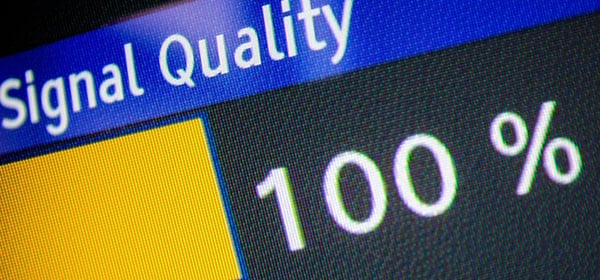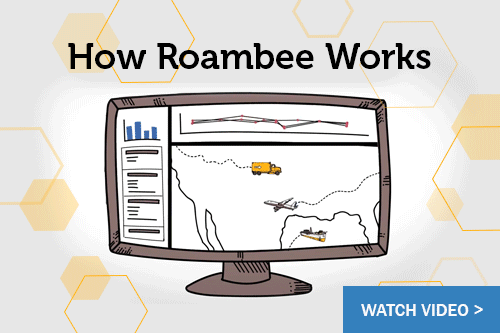Effective cold chain logistics doesn’t just secure an enterprise’s position on its home ground, it can help it boost exports and open new market opportunities in new geos over time.
While excellent employees and equipment can go a long way towards building a best-in-class cold chain, the addition of exceptional crisis handling is a catalyst that makes temperature-controlled logistics more resilient to the unknowns that can undo your best laid strategies.
Delays, customs, equipment breakdown, the skyrocketing price of freight, they’re all the usual supply chain snags that you have to cope with in addition to the complications that are unique to cold chain logistics.
Transporting cold chain shipments is a delicate balance of maximizing safety while minimizing cost.
What that means is you’re forced to forgo the best cold chain transport and packaging options, opting instead for the best that you can afford.
Given the limitations — in terms of cost-efficiency, capability, and capacity — of existing cold chain packaging and transport solutions, your best bet to hit that (fiscally responsible + functional) sweet spot is to deploy a good monitoring solution that helps detect and respond to cold chain risks.
Here are eight features that make up a good cold chain monitoring solution to manage your disruptions.
1 - Real-time Temperature Data
Because proactive is better than post-mortem.

Knowing that temperature excursions happened after the fact will just tell you what should be tossed out.
Knowing that excursions are happening as they happen gives you a chance to intervene, perhaps even save more of your shipments from crossing the point of no return.
The power of real-time monitoring alerts to enhance actionability, contain loss better, and manage incidents before they have a chance to get out of hand cannot be understated.
2 - Real-time Condition & Location Monitoring
More information = better context = better decisions.

Knowing that a cold chain is broken usually triggers a series of responses — calling the driver, ascertaining why the temperature fluctuation occurred, and dispatching a recovery vehicle if necessary, for example.
But what if there’s no response from the driver?
Is the driver’s phone switched off?
Did the driver park for the night and forget to leave the reefer’s power on?
What if the driver fell asleep at the wheel and veered off the road?
When you’re troubleshooting blind like that, it helps to know where to send a set of eyes to get a better idea of what happened.
Even if things aren’t going awry, however, they may not be quite what they seem.
A shipment of milk bottles, for instance, could complete its journey at the right temperature, and as far as the driver is concerned, it’s been delivered as promised.
But what if the driver took a really bumpy road.
What if the bottles were made of glass?
What if the truck’s suspension was worn out?
While temperature is an important parameter to evaluate the health of a cold chain shipment, it’s not necessarily the only one.
If all you had was temperature data, you wouldn’t be able to tell if cold chain products that are sensitive to light, humidity, vibration, or several other factors, completed their journey without incident.
Considering what’s usually transported through cold chains — fresh produce, meat products, pharmaceutical compounds, and delicate vaccine vials — the extra dimensions that you monitor could help you determine your cold chain shipment’s health more accurately.
3 - Monitoring at the Package-level
The smaller you are, the faster you rise.

Cold chain consignments that are smaller or haven’t been packaged in large aggregated containers (strips of pills or a single-serve boxes of frozen food for example) are at greater risk of temperature excursions due to their lower thermal mass.
It’s important to detect hotspots or temperature spikes that may have occurred for individual packages like these, especially ones that were closest to the refrigerator door, outside cold rooms for longer than the rest of the shipment, or perhaps ones that fall victim to a clogged cooling vent.
To get a better read, sensors should be part of the shipment, not just hover over it.
That means your monitoring hardware needs to be:
- Small enough to fit into standard cold chain packaging options.
- Low-cost, since you’ll need to deploy one in every (or every other) package.
- Stay connected, despite the likely drain on battery.
BeeBeacons are a good example.
4 - Constant Connectivity
Global operations need global coverage.

When you’re shipping across borders, through multi-modal channels, using thickly-insulated containers, you’re compounding your connectivity problem.
Real-time monitoring and alerts are only possible if your tracking devices are always connected to a communications network. The easiest way to stay connected throughout the world is to use cellular data networks or other such modes of relay.
The problem with cellular connectivity is that it’s sometimes spotty, especially if you’re shipping your cold chain products through remote rail, land, or ocean routes. As if spotty connectivity wasn’t bad enough, the tracking devices also need to be able to detect and broadcast signals through the thick, heavily insulated walls of cold chain shipping containers/reefers, which may be made up of metal or hybrid insulating materials that are impervious to radio signals.
You could lose the real-time advantage of your cold chain monitoring solution if there’s a drop in connectivity. The duration of this downtime as well as the sensitivity of your shipments will determine the overall impact or loss in case of excursions, and there’s nothing you’d be able to do about it.
There are several BLE-based or RFID-based solutions available that can act as passive loggers, or hybrid solutions that use mobile phones or other connectivity gateways to broadcast data via the Internet.
The best solution you can bet on, however, is a Hybrid IoT-based real-time shipment location and cold chain monitoring solution.
5 - Trusted Analytics
Real-time alerts shouldn’t end up in your spam folder.

The beauty of modern cold chain monitoring solutions is their ability to sound an alarm at the slightest hint of something going wrong.
The problem with modern cold chain monitoring solutions is they rely on machines, and machines tend to break down.
Faulty sensors lead to false alerts, bad reports, bad decisions, or worse — abject frustration.
An alert popping every time that a temperature excursion occurs could also be irrelevant, as it may not necessarily affect your goods.
It’s important that your cold chain monitoring solutions – and the analytical architectures they feed into — are impeccable and beyond reproach. The data that’s gathered needs to be confirmed and vetted.
While past patterns, machine learning, and predictive algorithms could have their advantages, it’s also important to plug in additional real-time information – weather & news feeds, traffic reports, ERP data, external tracking feeds for the ship or train your shipment is on — for a more holistic view of your shipment and anything that could disrupt your cold chain.
An example is real-time Mean Kinetic Temperature (MKT).
6 - Ease of Use
Customized, Simplified, Relevant — the CSR of Cold Chain Monitoring Systems

While the system that helps you monitor and manage your cold chain logistics operations may be space-age, it’s important to remember that it’s not built for robots.
The average user — whether it’s someone monitoring a dashboard in an office or someone getting alerts in the field — need systems and processes that are easy to understand and present simplified, relevant, and customized information.
You need real-time data and alerts alright, but they also need to be easy to consume and act on.
If the logistics monitoring system of your choice isn’t, or if it’s tough to set up and needs time for debugging and fine-tuning, it’s wasting not just valuable time and money, but also raising the risk of something going wrong in your operations due to “technical errors”.
While DIY is fun for some things, when you’re setting up a complex real-time monitoring system for your logistics operations, it’s probably a better idea to use something that works out-of-the-box. Plus points for something that’s also pay-as-you-go.
The Bee + BeeBeacon solution is an out-of-the-box pay-as-you-go solution that can fit your bill.
7 - Easy Device Reverse Logistics to Enhance ROI
To recover more monitoring costs, recover all monitoring devices.
Most cold chain monitoring devices are single-use data loggers or other such expendable options. The good things in life don’t come cheap though, and neither do the good tracking devices.
The best options — ones with better sensor packages, constant connectivity, real-time reporting, and long-lasting batteries — aren’t designed to be single use; they’re with you for the long haul.
Your cold chain monitoring solution won’t work without the devices they’re built on, which means you need to take their recovery and reuse seriously, especially when you’re not running simple closed-loop cold chain logistics operations.
Without effective reverse logistics for your monitoring devices, you’ll be piling up your sunk costs.
8 - Incident Response
If you're seeing sparks, you should be scrambling to prevent a full-blown fire.
Well, someone should anyway.
There are plenty of things that can go wrong in cold chain logistics, and the risks of most, if not all, of them can be mitigated by real-time alerts and effective response and contingency plans.
Assuming, of course, you have a response or contingency plan in place.
While you can try and handle the intricacies of cold chain management in-house, handling incidents of temperature excursions that occur beyond the confines of your enterprise are, to put it mildly, quite complicated.
More so when you’re running a global cold chain operation.
A good monitoring system should take that into account, allowing you to easily (perhaps even automatically) rope in external players — like professionals trained to handle coolant spills, or local providers and supplementary support to salvage a shipment at risk of spoilage — to help cope with the complications.
Why Cold Chain Monitoring and Incident Response Should Be Automated, or Better, Outsourced
Because your time is important.
If you’re the kind of person that forgets to keep the milk in the refrigerator before sleeping at night, you could probably do with one of those automated reminders.
Or better yet, maybe you’ve sprung for one of those IoT Smart fridges that ring your mobile before bed if you’ve forgotten to put the milk away.
If you’re the kind of person that sleeps soundly as soon as they hit the pillow however, chances are you’ll miss that call.
You could go the extra mile, hook up your Smart fridge to your Smart speakers, and make sure they play the loudest, most obnoxious sounds that you can rustle up if you miss your Smart fridge’s call.
Problem solved!
Now there’s just the little matter of dealing with those enraged neighbors complaining about the noise.
Wouldn’t it be easier if you could just get someone else to take care of it to begin with; put your milk away. and you don’t have to get out of bed either?
That’s kind of the idea behind outsourcing supply chain management; well, outsourcing real-time supply chain crisis management to be exact.
For someone running complex cold chain operations, it’s not always possible to handle everything in-house or troubleshoot operations remotely — doubly so when you’re running global logistics operations.
It’s easier, sometimes even more efficient, to outsource it to a global provider that can watch over your operations into the wee hours of the night, helping you and your staff sleep more soundly.
We’ve got a control tower set up that combines cold chain monitoring with incident response.
Ask us about BeeCentral.
In Summary
Over 70% of the world’s population live in developing or emerging markets.
It’s only logical to assume these markets represent a huge opportunity for global enterprises, especially those in the food or pharmaceutical space.
It’d be foolhardy to break into these markets without proper risk assessment and planning though.
To tap into these and more distant markets, cold chain logistics operations will need to cope with longer, more difficult and unpredictable shipping routes, pass through a variety of climatic zones, and rely on cold chain transport or storage infrastructure that may not be on par with more evolved geos.
Without proper cold chain monitoring and response strategies, companies running operations in these markets could suffer substantial revenue loss. It’s important to note that even with plenty of testing and prepping, the unforeseen can — and often does — happen.
That’s why it’s critical that shippers invest in a real-time cold chain monitoring system, have contingency plans in place, and ensure that everyone who’s part of their logistics operations are in the loop about incidents or anomalies as early as possible, allowing to take quicker action, and giving your operations its best chance to normalize before something hits your bottom line.
Perhaps prevention is better than cure.
When you’re dealing with cold chains however, prevention has a hefty price tag.
In this case, prevention and intervention is often cheaper than recovery.
With products like the Bees & BeeBeacons in the market, prevention and intervention are also becoming cost-effective. Watch how they work!













